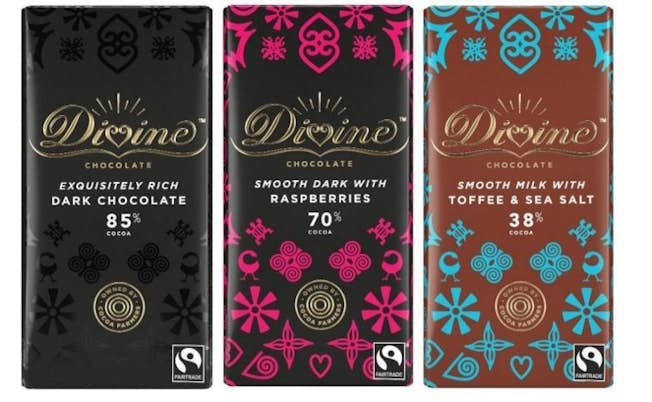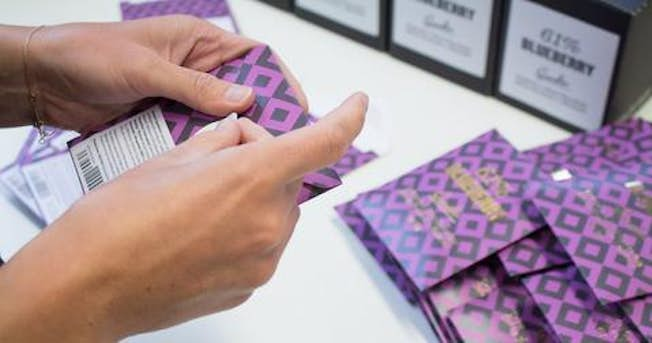Apr 19, 2019
What Chocolate can Teach Us About Authentic Brand Imaging
What picture comes to mind when you think of Easter?
For many, this holiday represents religious traditions and Spring’s new beginnings. For many more, however, it’s all about chocolate!
During this season, approximately 80 million chocolate eggs are sold in the UK alone, and over $2.4 billion is spent on candy in the United States.
When we look closer at this massive market, we see not only a global chocolate obsession, but opportunities for chocolate brands to really make their mark.
This Easter, we want to discuss what chocolate represents, and more specifically, how two sustainable chocolate brands are helping us redefine what it means to create a truly authentic brand image.
What’s more, we’ll look at how these brands are teaching us how to build more effective digital marketing campaigns from an authentic brand image foundation.
So, what can chocolate teach us about brand imaging?
Two Spotlight Chocolate Brands

Authentic branding is like a box of chocolates… as packaged and marketed by Divine.
The Ghanaian farming co-operative, Kuapa Kokoo began forming Divine in the 1990s. It took the co-op 8 years to gain the rights required to develop a chocolate bar and company worth competing with big name brands.
Now, Divine is the only chocolate company that is 100% fairtrade and owned by – at last count, 85,000 - cocoa farmers, each of whom receive a portion of Divine’s profits.
In terms of brand imaging, they have every reason to market their brand authentically. That’s because they have every reason to be proud.
64 percent of consumers claim that shared values encourage a trusted relationship with a brand. This fact rings true to Divine’s Millennium Product status award.
The Rising Newcomer: Goodio

Goodio is a young organic and sustainable Finnish chocolate company that’s beginning to take on both the chocolate and digital marketing industry, rooted in their motto, “It’s All Good.”
While Divine’s authenticity comes from its history and Fairtrade success, Goodio focuses on wellbeing.
The founder, Jukka Peltola who previously worked as a game developer at Rovio (creators of Angry Birds), was inspired to develop the company during his personal journey for improved health.
Chocolate is not always associated with good nutrition, however. Peltola unearthed his passion by studying the benefits of raw cacao, including its powerful antioxidant, anti-inflammatory, and nutrient-boosting properties. Cacao's link to overall wellbeing drove Peltola to create a product for the greater good.
Now, Goodio chocolate is not only healthy but fair and sustainable, derived from cacao beans from DR Congo, Ecuador, and Peru, all wild certified organic or organically cultivated, while supporting small family farms.
5 Chocolate-Inspired Steps to Brand Authenticity
Reading these brand stories don’t just give us serious chocolate cravings.
By following their lead, we can learn how to implement strategies and make decisions that have been proven to turn a local co-op from Ghana and a four-year-old Nordic company into international inspirations.
Let’s look at the top five chocolate gold nuggets of wisdom which can be applied to any business or brand.
1. Create a Solid Story
Great stories create trust.
That’s because stories are an extremely powerful communication tool. In fact, research shows that the human brain reacts strongly to descriptive stories, as they influence both the motor and sensory cortexes.
It’s the combination of comprehension, anticipation, and receptivity that produces trust. And this trust can connect you closer to your audience.
However, in order to create a truly great story, you should consider these tips:
- Make sure your story has a strong sense of a brand persona: Allow the writer’s personality to shine through. Remember: stories exist to create a connection, which is fostered by a strong personality. Think of eyewear retailer, Warby Parker, for example. He developed his brand story out of spite for expensive eyewear, and to this day, his brand holds a strong, rebellious voice that symbolizes his story and his products.
- Your story should outline your reason for existing: One of the most powerful brand stories today is TOM’s story. TOMS Founder, Blake Mycoskie developed the brand after witnessing the hardship children experienced from growing up without shoes. Creating shoes for others is TOM’s reason for existing – and they make it known for reasons that go beyond just profit.
- Highlight how you are similar to your audience: By developing a humanistic approach, you’ll be able to connect even deeper to your audience. Take Virgin America for example. From watching their in-flight safety video with over 13 million views or their recent promotional video, it’s clear that they get it. Through these branding tactics, they’re showing customers that they understand how dull and even painful an experience flying can be. This develops a stronger sense of trust.
2. Focus on the Social Good
Build a brand that generates environmental or social good.
In this day and age, innovators and entrepreneurs should be using their brand to make the world a better place. Large companies like Verizon and MADE OF are utilizing “humanibility”, a term coined by Verizon that means doing more good for the world – and in the process, they’re gaining profitable global attention.
By pursuing social good, you’ll be verifying yourself as a people-first brand, which feels and looks great.
3. Share Your Story... Everywhere
Whether you’re a startup, or in need of a brand facelift, PR, and marketing initiatives should be visible and heard across as many platforms as possible.
Make your story a part of what your company is.
You can do this by:
- Being active on social media: Stories spread through these platforms. Nearly 90 percent of marketers say using social media has increased their brand exposure. By sharing your story, you’ll be building a strong, elemental presence online.
- Think Video: According to Hubspot, 4x as many customers prefer watching videos than reading about the product. Share your story through Divine's (below), and you’ll be reaching a wider audience, on a deeper level.
4. Build Communities
According to a study by Cigna, almost half of Americans feel isolated and alone.
This suggests that, more than ever, people are in need of a sense of community. By encouraging or creating a community centered around your personal brand and a shared lifestyle or mantra, you’ll be feeding into that demand, while learning more about your audience.
At the same time, the user-generated content, feedback, and input will also help your brand’s true authenticity shine.
In fact, a recent survey by Stackla, based on 1,590 consumers shows that besides being seen as the most authentic, user-generated content is the most influential for consumers.
“Most consumers say that they’ve made purchasing decisions based on user-generated visuals - 57% have made plans to dine at a particular restaurant, 54% have purchased a consumer packaged good and 52% have made plans to travel to a specific destination based on a consumer-created image or video.” Stackla
5. Be a Trendsetter
Building an impactful, authentic brand sometimes means changing the status quo.
Smaller, change-focused brands such as Patagonia are becoming increasingly popular and well-established, simply due to their commitment to social good.
In the process of changing the world, they’re turning heads, because brands that focus on making a difference, and who show those efforts, are the ones carving and leading our future culture.
The Secret Ingredient to Leveling Up Your Brand Image
In short, the secret is transparency.
While authenticity and transparency are different sides of the same chocolate coin, together, they can truly make a huge impact on your brand image.
Another Goodio motto is, “Purpose Over Profit.”
The best part?
All of their statistics and information are sourced and 100% transparent.
By believing in the need for greater transparency in the food industry in terms of where it’s from, and how it’s sourced and treated, Goodio and Divine share the entire process, from bean to bar, for a more transparent, sustainable and healthier industry.
According to Label Insight, “94 percent of all consumers are more likely to be loyal to a brand when it commits to full transparency.”
As the American cotton company, Supima states, brand transparency is the new normal and goes hand-in-hand with brand integrity and a positive brand image.
By harnessing brand transparency, and showing your audience exactly how you do business, then explaining how that business affects workers, your audience and the planet, you’ll be generating a stronger, more loyal following.
Include an authentic brand story into the mix, the way Pinterest co-founder Ben Silbermann did, by sharing his story with true authenticity and passion, and you have a bulletproof brand image that will continue to grow.
How to Translate These Tips into a Winning Marketing Campaign
Whatever your specific marketing campaign goal is, authenticity, a strong brand story and transparency should be at the forefront of your strategy.
As we now know, this is the way forward.
In every stage of your marketing campaign, from KPIs to lead nurturing, you should be implementing authentic experiences and information on how your brand story is verified and true.
Operating at these best standards of business practice is the winning formula for lasting success and developing a brand image that truly resonates with your audience.
So, this Easter, when you’re looking longingly at your child’s Easter chocolate (as you hide it behind the sofa), you might be looking at a newly realized sense of farmer liberation and nutrition.
But most likely, you’ll be looking at a mouthful of inspiration for a new brand and marketing strategy – a reminder to keep things real in every step of the journey.
Related
Upgrade to Power Membership to continue
your access to thousands of articles, toolkits, podcasts, lessons and much much more.
Become a Power Member- Login
- View Courses
- - - -
- Courses
- Resources
- - - -
- My Account
- Change Password
- Logout





